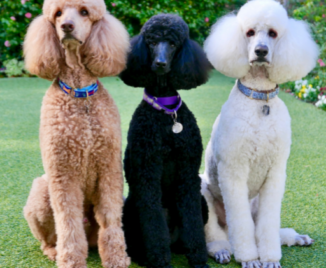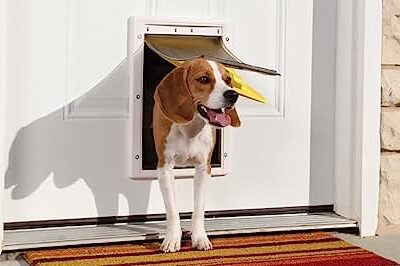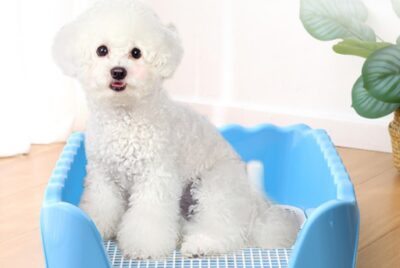How To Put On a Dog Harness
How to Put on a Dog Harness – Benefits to you and your Furry Friend
Introduction
Hey there! If you’re a proud dog owner, you know how important it is to keep your furry friend safe and comfortable during walks. One essential tool for achieving this is a dog harness. In this article, I’ll walk you through the benefits of using a dog harness and provide you with helpful tips on how to properly put one on your canine companion. So, let’s get started!
Why Use a Dog Harness
Before we dive into the nitty-gritty of putting on a dog harness, let’s talk about why it’s beneficial to use one. A dog harness offers several advantages over a traditional collar and leash setup. First and foremost, it reduces strain on your dog’s neck and throat, which can be especially crucial for dogs with respiratory issues or those prone to pulling. Additionally, a harness provides better control and helps distribute the force of your dog’s movements more evenly.
Types of Dog Harnesses
When it comes to dog harnesses, there are various options available. Let’s explore some of the most common types:
Step-In Harness
The step-in harness is designed to be easily put on by having your dog step into it. It wraps around their chest and clips on their back, providing a secure fit. Step-in harnesses are suitable for dogs who are comfortable lifting their legs.
Back-Clip Harness
The back-clip harness features a D-ring on the upper back, making it easy to attach the leash. It’s a popular choice for small to medium-sized dogs and works well for dogs who don’t tend to pull excessively.
Front-Clip Harness
A front-clip harness has the leash attachment on the front, which helps redirect your dog’s attention towards you when they pull. This type of harness is ideal for dogs who require extra control during walks.
No-Pull Harness
As the name suggests, a no-pull harness is designed to discourage pulling behavior. It often has a front and back attachment point, providing additional control and minimizing pulling by redirecting your dog’s movement.
Martingale Harness
Martingale harnesses are a combination of a harness and a martingale collar. They offer more control over dogs who tend to slip out of regular harnesses. The design ensures that the harness tightens slightly when your dog pulls, discouraging escape attempts.
Choosing the Right Harness
Selecting the right harness for your dog is crucial to ensure comfort and safety. Consider the following factors:
Consider Your Dog’s Size
Different harnesses are designed for specific dog sizes. Measure your dog’s chest and neck circumference and consult the manufacturer’s sizing guide to find the perfect fit.
Assess Your Dog’s Behavior
Take into account your dog’s behavior during walks. If your dog tends to pull excessively, a no-pull or front-clip harness might be more suitable. For well-behaved dogs, a back-clip harness can provide the necessary control.
Evaluate the Harness Features
Look for features such as adjustable straps, padding for extra comfort, reflective elements for visibility during low light, and sturdy construction. These factors contribute to a better walking experience for both you and your furry friend.
Proper Fit and Adjustments
Once you’ve chosen the right harness, it’s essential to ensure a proper fit. Follow these steps:
- Familiarize Your Dog:
Introduce the harness to your dog in a calm and positive environment. Allow them to sniff and investigate it, associating it with positive experiences. - Open the Harness:
Unclasp any buckles or snaps and lay the harness flat on the ground, ready for your dog to step into. - Slip Your Dog’s Legs Through:
Lift one of your dog’s front legs and guide it through the corresponding opening, followed by the other leg. - Clip the Harness Buckles:
Bring the two sides of the harness together, aligning the buckles, and fasten them securely. - Adjust the Straps:
Ensure the harness fits snugly but not too tight. You should be able to fit two fingers comfortably between the harness and your dog’s body. Adjust the straps accordingly to achieve the right fit.
Finding a Good Dog Harness
Below are some suggestions of reputable sites to browse through to help you choose a harness:
- Ruffwear – Explore high-quality and durable dog harnesses designed for outdoor adventures.
- Kurgo – Discover a wide range of dog harnesses that prioritize comfort and safety during walks and travels.
- Julius-K9 – Check out the renowned Julius-K9 harnesses known for their ergonomic design and suitability for working dogs.
Step-by-Step Guide to Putting on a Dog Harness
Let’s break down the process of putting on a dog harness into easy-to-follow steps:
- Familiarize Your Dog
- Open the Harness
- Slip Your Dog’s Legs Through
- Clip the Harness Buckles
- Adjust the Straps
By following these steps, you’ll quickly become a pro at putting on your dog’s harness and ensuring their comfort and safety during walks.
Tips for a Successful Introduction
Introducing a harness to your dog may take some time and patience. Here are a few tips to make the process smoother:
- Associate the harness with positive experiences by giving treats and praise.
- Start with short practice sessions indoors before venturing outside.
- Gradually increase the duration of wearing the harness.
- Engage your dog in activities they enjoy while wearing the harness to create positive associations.
Training Your Dog to Accept a Harness
If your dog is resistant to wearing a harness, training can help them overcome this. Use positive reinforcement techniques such as treats, praise, and play to reward your dog for wearing the harness. Gradually increase the duration of wearing it, making the experience enjoyable for your furry friend.
FAQs
- Q: How do I measure my dog for a harness?
A: To measure your dog, wrap a measuring tape around their chest, just behind the front legs, and measure the neck circumference. Use these measurements to select the appropriate harness size. - Q: Can I leave the harness on my dog all the time?
A: It’s generally recommended to remove the harness when your dog is not supervised or during bedtime. This allows their skin to breathe and prevents any discomfort. - Q: Should I choose a harness with front or back attachments?
A: The choice depends on your dog’s behavior. If your dog pulls, a front-clip harness can help redirect their attention. For well-behaved dogs, a back-clip harness offers adequate control. - Q: Can I use a harness for small dog breeds?
A: Absolutely! There are harnesses designed specifically for small dog breeds. Make sure to choose one that fits your dog snugly and provides comfort. - Q: How often should I check for wear and tear?
A: Regularly inspect the harness for any signs of wear, such as fraying, loose stitching, or damaged buckles. Replace the harness if any issues are found to ensure your dog’s safety.
Conclusion
Putting on a dog harness doesn’t have to be a daunting task. By choosing the right harness, ensuring a proper fit, and following the step-by-step guide, you can provide your furry companion with a comfortable and secure walking experience. Remember to introduce the harness gradually, using positive reinforcement to help your dog adapt. Enjoy your walks together, knowing you’ve taken the necessary steps to keep your dog safe and happy.
Unique FAQs
- Q: Can I use a dog harness for training purposes?
A: Yes, dog harnesses can be useful during training sessions. They provide better control and can help redirect your dog’s attention during training exercises. - Q: Are there harnesses specifically designed for dogs with mobility issues?
A: Yes, there are specially designed harnesses available for dogs with mobility issues. These harnesses provide additional support and help dogs with limited mobility move comfortably. - Q: Can I use a harness for my puppy?
A: Yes, harnesses are suitable for puppies. Choose a harness that’s adjustable and allows for growth. Start with short wearing sessions to ensure your puppy gets used to it gradually. - Q: Should I clean my dog’s harness regularly?
A: Yes, it’s a good practice to clean your dog’s harness regularly. Follow the manufacturer’s instructions for cleaning and maintenance to keep the harness in good condition. - Q: Can I use a harness for my older dog?
A: Absolutely! Harnesses can be beneficial for older dogs, especially those with joint issues or arthritis. Look for harnesses with additional padding and support to provide extra comfort.




